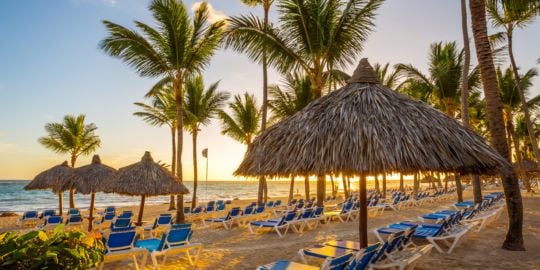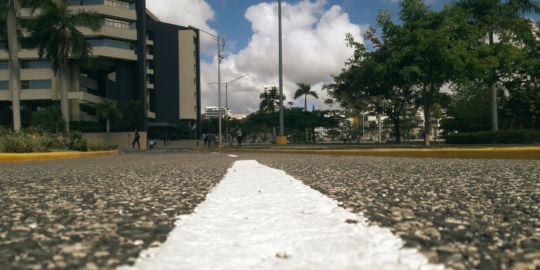The San Juan radar at 7.30 is showing the rain band associated with Grace arriving at La Romana/Miches/just east of Las Galeras. It is at present the full depth of the country and about 100 miles wide which suggests prolonged rain for 6 hours everywhere if it is maintained. The radar shows no rain showing near me now but is raining so the real stuff is a few hours away and later for the capital and north coast.
This could be bad for DR with flooding, mudslides and power and water outages.
Hurricane Planning
We have had some rains here already and the real stuff is still "en Camino".
There is a disturbance south of the Cape Verde Islands off the African coast that merits watching.
The models have consistently to date shown it heading our way only to curve north when closer to the islands and out of harms way for us. But some models, GFS and CMC, are beginning to shift to a lesser curve north and closer to island impacts as predictions for the high pressure system to the north changes.
We should have a better idea of the likely track envelope near the islands as the week progresses and a depression forms.
Invest 98L, the disturbance to the south west of the Cape Verde Islands which NHC gives 90% chance of developing in the next 5 days is one to watch carefully.
https://www.nhc.noaa.gov/gtwo.php?basin … mp;fdays=5
There is significant disagreement between the weather models on the tracking right now but all foresee a strong storm developing.
The Euro foresees the storm impacting the northern Leeward Islands, north of Puerto Rico and the north east of DR, whilst the GFS curves it northwards before reaching the islands. The CMC has a track closer to the Euro but passing just north of DR.
If it is going to impact us it will be about 1st October so plenty of time to watch and be ready if it heads our way. Yes a slow mover.
Models are sophisticated computerized weather forecasters which get fed the latest atmospheric data a few times a day and they then run and predict how the weather develops. They are our best guide at this time albeit there is no fixed centre for this disturbance yet. The key to tracking will be the Azores high to the north and if there is any weakness to allow a developing storm to shift north and out of harms way.
My reading indicates that the warmer water allows these storms to form faster- more powerful.
The stronger they are , the faster they seem to swerve north.
Good news for us
Yes, weather models are now converging on the probsbility of this disturbance, soon to have a name, to swing north as it approaches the islands. The Euro has joined GFS in predicting such a track in its most recent run and NHC has limited the cone extent westward.
Worth watching but now as of today the probability is low for any effect on us.
There is something behind it though.










